
The Victoria and Albert Museum in London is the world's largest museum of applied arts, decorative arts and design, housing a permanent collection of over 2.27 million objects. It was founded in 1852 and named after Queen Victoria and Prince Albert.
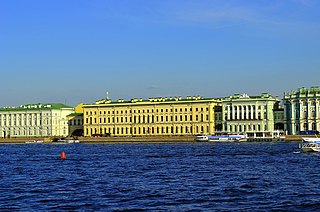
The State Hermitage Museum is a museum of art and culture in Saint Petersburg, Russia. It was founded in 1764 when Empress Catherine the Great acquired a collection of paintings from the Berlin merchant Johann Ernst Gotzkowsky. The museum celebrates the anniversary of its founding each year on 7 December, Saint Catherine's Day. It has been open to the public since 1852. The Art Newspaper ranked the museum 10th in their list of the most visited art museums, with 2,812,913 visitors in 2022.

The Norton Simon Museum is an art museum located in Pasadena, California. It was previously known as the Pasadena Art Institute and the Pasadena Art Museum and displays numerous sculptures on its grounds.

Adriaen Isenbrandt or Adriaen Ysenbrandt was a painter in Bruges, in the final years of Early Netherlandish painting, and the first of the Dutch and Flemish Renaissance painting of the Northern Renaissance. Documentary evidence suggests he was a significant and successful artist of his period, even though no specific works by his hand are clearly documented. Art historians have conjectured that he operated a large workshop specializing in religious subjects and devotional paintings, which were executed in a conservative style in the tradition of the Early Netherlandish painting of the previous century. By his time, the new booming economy of Antwerp had made this the centre of painting in the Low Countries, but the previous centre of Bruges retained considerable prestige.

The Galleria Borghese is an art gallery in Rome, Italy, housed in the former Villa Borghese Pinciana. At the outset, the gallery building was integrated with its gardens, but nowadays the Villa Borghese gardens are considered a separate tourist attraction. The Galleria Borghese houses a substantial part of the Borghese Collection of paintings, sculpture and antiquities, begun by Cardinal Scipione Borghese, the nephew of Pope Paul V. The building was constructed by the architect Flaminio Ponzio, developing sketches by Scipione Borghese himself, who used it as a villa suburbana, a country villa at the edge of Rome.

Walters Art Museum is a public art museum located in the Mount Vernon section of Baltimore, Maryland. Founded and opened in 1934, it holds collections from the mid-19th century that were amassed substantially by major American art and sculpture collectors, including William Thompson Walters and his son Henry Walters. William Walters began collecting when he moved to Paris as a nominal Confederate loyalist at the outbreak of the American Civil War in 1861, and Henry Walters refined the collection and made arrangements for the construction what ultimately was Walters Art Museum.

The Groeningemuseum is a municipal museum in Bruges, Belgium, built on the site of the medieval Eekhout Abbey.

The Denver Art Museum (DAM) is an art museum located in the Civic Center of Denver, Colorado. With encyclopedic collections of more than 70,000 diverse works from across the centuries and world, the DAM is one of the largest art museums between the West Coast and Chicago. It is known for its collection of American Indian art, as well as The Petrie Institute of Western American Art, which oversees the museum's Western art collection. and its other collections of more than 70,000 diverse works from across the centuries and world. The museum's Martin Building was designed by famed Italian architect Gio Ponti in 1971.
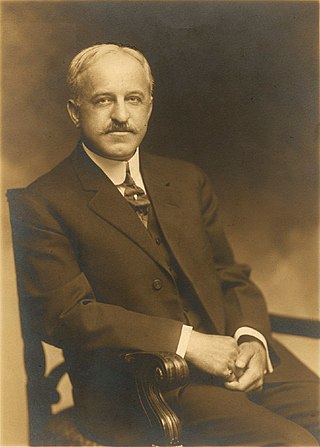
Samuel Henry Kress was a businessman, philanthropist, and founder of the S. H. Kress & Co. five and ten cent store chain. With his fortune, Kress amassed one of the most significant collections of Italian Renaissance and European artwork assembled in the 20th century. In the 1950s and 1960s, a foundation established by Kress would donate 776 works of art from the Kress collection to 18 regional art museums in the United States.

Lorenzo di Credi was an Italian Renaissance painter and sculptor best known for his paintings of religious subjects. He is most famous for having worked in the studio of Andrea del Verrocchio at the same time as the young Leonardo da Vinci.

A plaquette is a small low relief sculpture in bronze or other materials. These were popular in the Italian Renaissance and later. They may be commemorative, but especially in the Renaissance and Mannerist periods were often made for purely decorative purposes, with often crowded scenes from religious, historical or mythological sources. Only one side is decorated, giving the main point of distinction with the artistic medal, where both sides are normally decorated. Most are rectangular or circular, but other shapes are found, as in the example illustrated. Typical sizes range from about two inches up to about seven across a side, or as the diameter, with the smaller end or middle of that range more common. They "typically fit within the hand", as Grove puts it. At the smaller end they overlap with medals, and at the larger they begin to be called plaques.
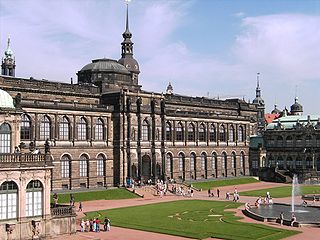
The Gemäldegalerie Alte Meister in Dresden, Germany, displays around 750 paintings from the 15th to the 18th centuries. It includes major Italian Renaissance works as well as Dutch and Flemish paintings. Outstanding works by German, French, and Spanish painters of the period are also among the gallery's attractions.
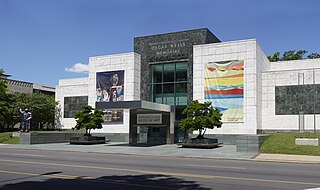
The Birmingham Museum of Art is a museum in Birmingham, Alabama. Its collection includes more than 24,000 paintings, sculptures, prints, drawings, and decorative arts representing various cultures, including Asian, European, American, African, Pre-Columbian, and Native American. The museum is also home to some Renaissance and Baroque paintings, sculptures,and decorative arts from the late 13th century to c. 1750.

The Columbia Museum of Art is an art museum in the American city of Columbia, South Carolina.

The Allentown Art Museum of the Lehigh Valley is an art museum located in Allentown, Pennsylvania. It was founded in 1934 by a group organized by Walter Emerson Baum, a Pennsylvania impressionist painter. The museum maintains a collection of over 19,000 works of art and is a major regional art institution. The museum also maintains a library and archives containing over 16,000 titles and 40 current periodicals.
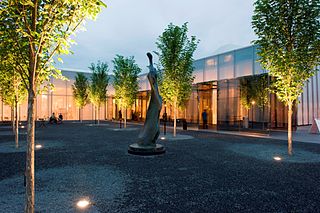
The North Carolina Museum of Art (NCMA) is an art museum in Raleigh, North Carolina. It opened in 1956 as the first major museum collection in the country to be formed by state legislation and funding. Since the initial 1947 appropriation that established its collection, the Museum has continued to be a model of enlightened public policy with free admission to the permanent collection. Today, it encompasses a collection that spans more than 5,000 years of artistic work from antiquity to the present, an amphitheater for outdoor performances, and a variety of celebrated exhibitions and public programs. The Museum features over 40 galleries as well as more than a dozen major works of art in the nation's largest museum park with 164-acres. One of the leading art museums in the American South, the NCMA recently completed a major expansion winning international acclaim for innovative approaches to energy-efficient design.

The National Museum in Kraków, popularly abbreviated as MNK, is the largest museum in Poland, and the main branch of Poland's National Museum, which has several independent branches with permanent collections around the country. Established in 1879, the museum consists of 21 departments which are divided by art period: 11 galleries, 2 libraries, and 12 conservation workshops. It holds some 780,000 art objects, spanning from classical archeology to modern art, with special focus on Polish painting.

Memphis Brooks Museum of Art is an art museum in Memphis, Tennessee. The Brooks Museum, which was founded in 1916, is the oldest and largest art museum in the state of Tennessee. The museum is a privately funded nonprofit institution located in Overton Park in Midtown Memphis.
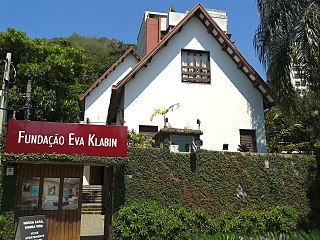
The Eva Klabin House Museum is an historic house museum located in the city of Rio de Janeiro, Brazil. It is a private institution established in 1990 by the Brazilian collector and philanthropist Eva Klabin (1903–1991), with the purpose of preserving and displaying the art collection gathered together during her life. The collection is open to the public in the house where Klabin lived for over thirty years. It is considered one of the largest classical art collections in Brazilian museums, with over 2000 works spanning almost 5000 years, from Ancient Egypt to Impressionism.

The Fairfield University Art Museum, formerly the Bellarmine Museum of Art, is an art museum located on the renovated lower level of Bellarmine Hall on the campus of Fairfield University in Fairfield, Connecticut. The museum features Classical, Medieval, Renaissance, Baroque, Celtic, and Asian art and artifacts in three distinct galleries totaling 2,700 square feet (250 m2) of space.



























